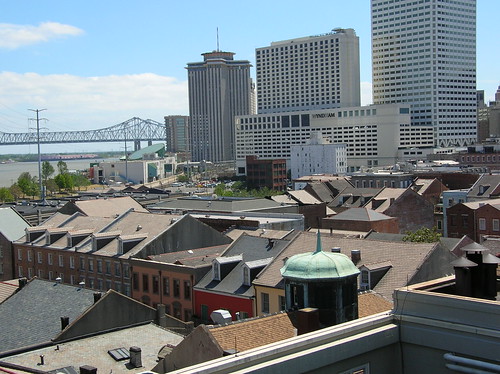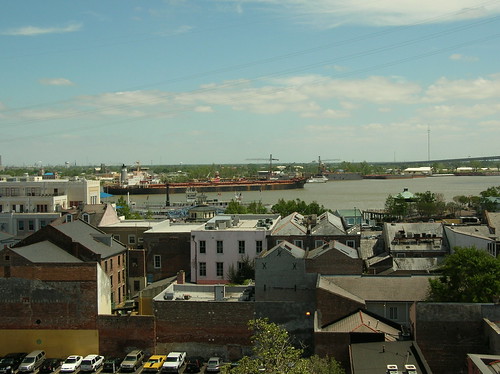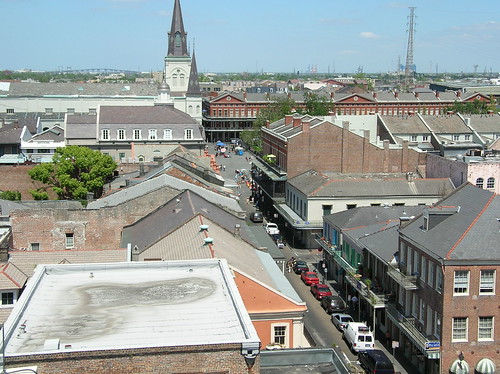



Anyway, on a semi-recent visit I discovered they had installed a card-accessible gate that kept non-guests out. So I haven't tried that in a while.
But maybe you can still get up there. At least that's what the lede here implies.
There are some hotels in the French Quarter and Central Business District that have rooftop pools. If you do know this, you do one of two things: you recognize that you’re not a guest at that hotel, and you do not go swimming in that pool. Or, you realize that it’s not difficult to walk through the lobby, take the elevator to the roof, and spend the day poolside, free of charge.Yes, yes, dramatic music. But, actually, we did know that the hotel now stands on the site of one of America's largest slave markets. We last mentioned it back in August in this post about the Confederate monuments. That post, in fact, contains a similar observation to the focus of the WWNO story which is this. Our prized French Quarter
A lot of people choose option B, and they do it at the Omni Orleans on Chartres and St. Louis streets. But what these people might not know is that before the Omni Hotel, there was the St. Louis Hotel. And slaves were sold there.
There is no plaque on the wall that surrounds this private property. There are historic plaques around the city, like the one on Press Street that honors where Homer Plessy walked into the "whites-only" train car, for example. Or the one that commemorates the St. Charles Streetcar line in Lee Circle. Well, there are 52 places in New Orleans where slaves were sold. And of those 52, there are only two signs in the city of New Orleans that deal with the slave trade.But nobody cares about that in Dizneylandrieu. We're too busy moving forward with one voice or whatever to worry about whether or not the words "authentic cultural heritage" we're selling to the tourists actually mean anything.
“The official signage is on West Bank of the Mississippi River in today’s Algiers Point along the levee, and it recognizes that location’s role in transatlantic slave trade” says Greenwald. “On this side of the river there’s one plaque. It’s on Maspero’s Restaurant, across street from the St. Louis Hotel, and claims to be the site of Maspero’s Exchange. That is not correct!”
The sign claims that Maspero’s Restaurant was the site of Maspero’s Exchange, but that was actually across the street, where the St. Louis Hotel is. So of the 52 sites on the East Bank, only one is marked. And it’s wrong.
No comments:
Post a Comment